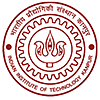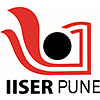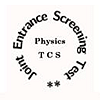MS Ayurveda Syllabus and Subjects

The MS Ayurveda is a 3-year full-time master’s course and thus the syllabus for the Ms Ayurveda course is mostly determined by the institute into which the student is accepted. Every institute has its unique course structure, which includes a combination of MS Ayurveda subjects to assist students to obtain a thorough grasp of the field.
MS Ayurveda Semester Wise Syllabus
The MS Ayurveda programme guarantees that students are well-versed in all of the domain's major features. The syllabus for the MS Ayurveda course is shown below each semester, which varies based on the college, but the fundamental course structure stays the same. The MS Ayurveda course allows students to go from basic to higher levels of knowledge.
MS Ayurveda First Year Syllabus
The table below contains the list of MS Ayurveda subjects in the first year:
| Semester I | Semester II |
| Agad Tantra | Dravya GunaKaumar Bhritya |
| Kayachikitsa | Maulik Siddhanta |
| Panchakarma | Prasuti Tantra & Stri Roga |
| Roga & Vikrit Vigyan | Rasa Shastra |
MS Ayurveda Second Year Syllabus
The table below contains the list of MS Ayurveda subjects in the second year:
| Semester III | Semester IV |
| Sharir Kriya | Shalya Tantra |
| Shalakya Tantra | Swastha Vitta |
| KaumarBhritya | Sharir Rachana |
| Shalyatantra (Sidhanta) | Yoga (Prayogika Vyavaharika) |
MS Ayurveda Third Year Syllabus
The table below contains the list of MS Ayurveda subjects in the third year:
| Semester V | Semester VI |
| Aushadhi-yog | Atura Pariksha Paddhati |
| Dashavidha Pariksha | Dashvidha Parikshya Bhava |
| Sadvidya sambhasha | Vadmarga |
| Parikshana Paddhati | Panchamahabhuta |
MS Ayurveda Subjects
MS Ayurveda subjects are dependent on the specialization and the college that the aspirants decide to choose. MS Ayurveda subjects are decided based on the core topics in Ayurveda. MS Ayurveda subjects are divided into theory and practical subjects.
MS Ayurveda Theory Subjects
The core MS Ayurveda subjects list contains essential subjects that all MS Ayurveda students study compulsorily, which are as follows:
- Sharir Kriya
- Shalya Tantra
- Shalakya Tantra
- Swastha Vitta
- KaumarBhritya
- Sharir Rachana
MS Ayurveda Practical Subjects
The practical subjects are the medium for the students to gain deeper insights into the area of their liking which may be a great value addition along with the core courses.
- Ayurved Samhita & Siddhanta
- Rachana Sharir
- Kriya Sharir
- Dravyaguna Vigyan
- Rasa Shastra & Bhaishajya Kalpana
- Agada Tantra Evum Vidhi Vaidyaka
- Swasthavritta
MS Ayurveda Course Structure
The MS Ayurveda course structure consists of both core and practical subjects. The course lasts 3 years, divided into six semesters. The course structure is:
- VI Semesters
- Theory Subjects
- Practical Subjects
- Master of Surgery course
- Research Projects
- Internship
MS Ayurveda Teaching Methodology and Techniques
The MS Ayurveda teaching technique is focused on practical experience. The conventional technique is rarely employed, and the course includes more hands-on projects and case studies for students to understand how to apply the knowledge of Ayurveda in real-world situations.
The teaching strategies and techniques used in this course are designed to guarantee that students following this course have access to all accessible infrastructure and amenities. The following are some general teaching methods and strategies:
- Lectures
- Practicals
- Seminars
- Research Projects
- Case Studies
MS Ayurveda Course Projects
Research projects are an important element of an MS Ayurveda program's curriculum. Professors grade these projects to determine the student's comprehension of the subjects. Students can select project subjects depending on their areas of interest and the field they plan to pursue after completing the course. The following are some of the most popular MS Ayurveda projects:
- Managing Various Diseases And Validating Chikitsa-Sutra And Kriya-Karma
- Restoration Of Ayurveda Texts From Rare And Not Published Documents With Critical Comments
- Examination Of Medical And Ayurveda Explanation In Non-Ayurveda Literature Such As Vedas, Puranas, Samhitas, Sanskrit Literature
- Occupational Hazards, And Diseases And Managing Ailments Via Ayurveda
- The Bioavailability And Efficacy Connection With Anupama And Sahapana
MS Ayurveda Course Books
Books may be an excellent investment for students pursuing an MS Ayurveda since they can help them understand more about their field of study in depth. Students can learn more about topics they are interested in by using books as a source of information.
Reference books can be borrowed from libraries, downloaded from the internet, or purchased. The following are some of the most popular MS Ayurveda books available for purchase by students:
| Name of Book | Author |
| Charaka Samhita | Charaka |
| Sushruta Samhita | Sushruta |
| Ayurveda Healing | David Frawley |
| Dhanwantari: A Complete Guide to the Ayurvedic Life | Harish Johari |








